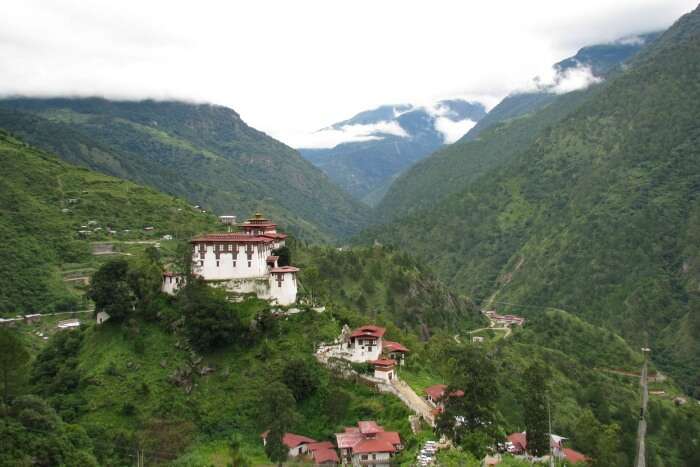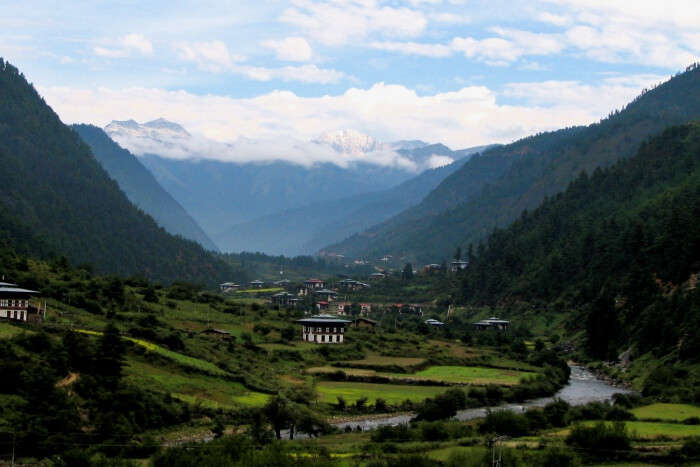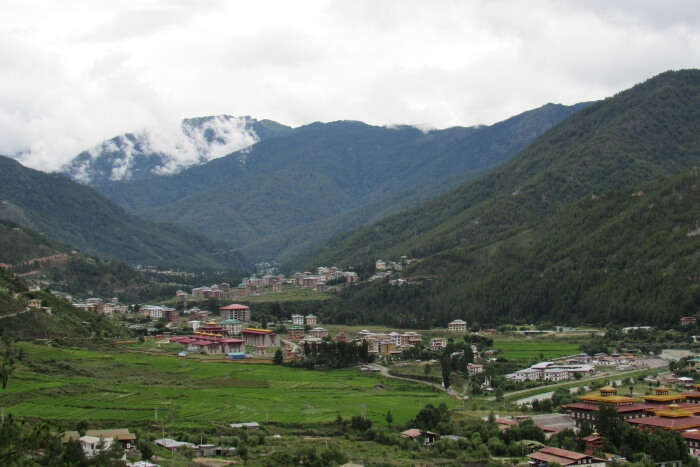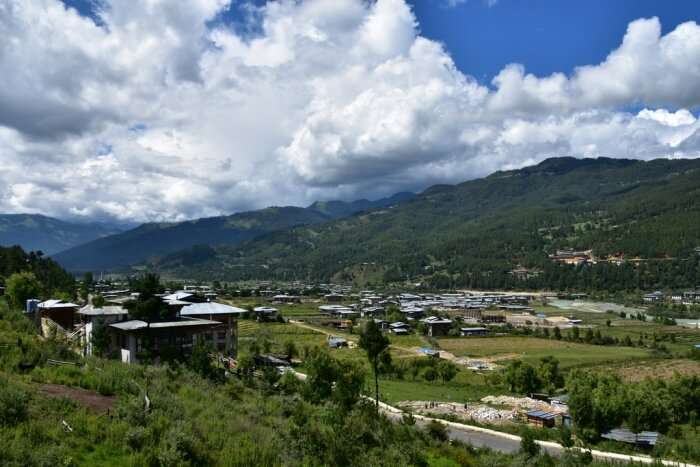Bhutan is a country of high passes, deep valleys, delightful history and rich culture, all of which play an important role in the notoriety of this state. Experienced world travelers are always excited about visiting Bhutan. Everything here is extraordinary, beautiful, calm and peaceful. One reason to visit this place is its mesmerizing valleys. From the moment you start your exciting journey in this country valleys in bhutanYou will find confirmation of the king’s claim that his traditional Buddhist country is above material wealth.
Top 7 Valleys in Bhutan
Revealing the grandeur and mystery of this curious royal kingdom, here is a quick manual to the valleys of Bhutan that will make your trip completely extraordinary. Below are the beautiful valleys of Bhutan that will leave you in awe!
1. Phobjikha Valley

Phobjikha Valley is also known as Gangti Valley, named after the wonderful Gangti Monastery. Located in the heart of Bhutan, Gangtey is an extremely fascinating glacial valley. This naturally formed bowl-shaped valley is full of hiking trails, villages, potato fields and sanctuaries. If you are planning a visit in November, you can also enjoy the major Crane Festival here and see the black-necked cranes that migrate from the Tibet Plateau every year.
There is also a Crane Information Center which creates awareness among tourists about Bhutan’s natural refuge. Phobjikha features its own must-see religious area, i.e., the Gangtey Goempa Monastery, situated at the top of the valley from where you can enjoy unique views of the valley. While there, you can also spot wild creatures like barking deer, sambar deer, red fox, Himalayan mountain bear and leopard.
Best time to visit Phobjikha Valley (Gangati): October to March
Must read: Burning Lake: A Pocket Guide to Enjoying Complete Tranquility in Bhutan’s Religious Destination!
2. Luneste Valley

This is one of the hidden valleys of Bhutan which is also known as Kurto Valley. The most isolated region of the country, in the north-eastern corner of Bhutan, the Luenste region boasts rugged mountain ranges, high peaks, amazing scenery and dense lush forests. This valley is the homeland of the brilliant rulers of Bhutan. The view of the valley is phenomenal with exposed rocks floating above the valley and dense coniferous forests.
While visiting this valley, you should also visit Keelung Monastery, Lheunste Dzong, Dungkar Nagtshang and Khoma Village. Lhenste is famous throughout the world for its specialty of weaving a unique material called Kithara. Breathtaking views, traditional textile industries and sacred pilgrimage sites are some of the things that will make your trip to this valley worthwhile.
Best time to visit Luenste Valley (Kurto): November to April
3. Punakha Valley

Situated at an altitude of 4265 feet, 108 Korten View marks the entry into the peaceful Punakha Valley. Situated at the intersection of Po Chhu and Mo Chhu, Punakha Dzong is a wonder in the world’s natural architecture. There are many places to visit in Punakha Valley making it one of the most spectacular valleys to visit in Bhutan. The Po Chhu and Mo Chhu rivers flowing through the valley make the valley more attractive. River rafting in the Po Chhu River is an amazing adventure to try for all the adrenaline junkies.
Here listening to the waves of water and chirping of birds will give peace to your mind. One feels relaxed a hundred times and the world does not seem such a noisy place for once. Nature lovers will appreciate the spring flowers that bloom around the city.
Best time to visit Punakha Valley: march to may
Read suggestions: Backpacking in Bhutan: An exciting experience for all travelers
4. Paro Valley

The Paro Valley in Bhutan is the junction of the Wang Chu and Paro Chhu rivers at Chuzom. Paro is a grid designed space, arranged around a flat valley base. Paro together with Jakar and Punakha forms the Golden Triangle on the map of Bhutan. Being one of the widest valleys in Bhutan, this picturesque area is surrounded by fertile rice fields. It is one of the greenest valleys in Bhutan. The cultural and historical extravagance of this place makes it the most preferred city for holidays. Actually, this is where the country’s international airport terminal is located, which is also a sight in itself.
Paro has many tourist attractions to make your visit worthwhile. The region has more than 155 monasteries and temples dating back to the fourteenth century. The most notable among them is Takhtsang Monastery also known as Tiger’s Nest which is a famous attraction of Bhutan. Other famous attractions of Paro Valley include the National Museum, which showcases the unusual wonders of the country and the rich culture of Bhutan. Drukyel Dzong and Kichu Lhakhang are some other attractions that should be on the list during your trip to Paro. This is the best Bhutanese city for hiking.
Best time to visit Paro Valley: september to may
Read suggestions: Hiking in Bhutan: 9 Fascinating Trails Every Hiking Lover Must Try!
5. Ha Valley

Only 30 km from Paro, this valley is filled with paddy crops from all around the province. Surrounded by mountains and vast plains, this valley is one of the largest valleys of Bhutan. Every year a large number of travelers come here to rest and relax. As you drive towards Haa Valley, you will also cross the Chele-La Pass. Situated at an altitude of 3988 meters above sea level, it offers an ideal view of Mount Jichu Dreki and Chomolhari. This peaceful place is also full of culture.
Plan your visit to this valley during the annual Ha summer festival to see the weaving and construction of yak hair tents! Plus, get the chance to see the wide collection of yak items displayed at the festival, learn about the process of wool making and yak shearing, understand the culinary customs of the Ha as you watch them turn yak dairy into delicious traditional food How to change into, and much more exciting activities.
Also visit Ha Wangchuklo Dzong, which was established in the year 1915. It is a charming place situated amidst lush greenery. One needs a few hours to admire the beauty of this perfectly painted building.
Best time to visit Ha Valley: March to May and October to November
Read suggestions: Sakteng Wildlife Sanctuary: Wilderness Walk in Bhutan
6. Thimphu Valley

Thimphu Valley is a combination of new commercial vitality and naturally beautiful small town. Along with its traditional Buddhist sites and attractions, the valley is also home to a selection of bistros, restaurants and dance clubs for a night out. Unique and charming, finding harmony between old and new is the way to take advantage of this beautiful city.
Enjoy the stunning views in this valley as there are many amazing places to visit in Thimphu. The impressive Trashi Choe Dzong will give a religious view of this place, and it is also a place that hosts many vivid Tsechu festivals. You can also visit its weekend market which enables you to taste the best dried fish along with other delicacies.
Apart from this, also visit the beautiful place Dochula Pass. It is an extraordinary and most prestigious place for tourists in Bhutan. The place offers picturesque views of snow-capped mountains and colorful banners fluttering in the wind.
Best time to visit Thimphu Valley: March to May and September to November
Read suggestions: The Only Guide to Zhemgang in Bhutan You Need Before Your Trip to Nepal
7. Bumthang Valley

Home to four beautiful mountain valleys and a variety of old monasteries and sanctuaries, Bumthang has marked its place as the most remarkable of all the regions of Bhutan. Bumthang also known as the “Switzerland of the East”, there is no doubt that it is one of the holiest and best places in Bhutan. Its four notable valleys are Chumi, Ura, Tang and Choekhor. Choekhor Valley is another name for Bumthang Valley, which is the largest of the four valleys mentioned. Due to its serene and charming environment it is the most popular place among travelers.
Jakar, an important provincial town, is also located here. It proudly houses the Jakar Dzong, whose whitewashed walls display typical Bhutanese architecture. The Dzong is grand, and glorious in its stature and allure. Cereals, rice and tomatoes are cultivated in this area. Their fields can be clearly seen in the valley.
One can enjoy the views of the rich rhododendron forests and vast sheep pastures and intermittent forest crossings at the Ura La Pass or at a slightly higher altitude with the drive-in transit that stops during the tour. are also. Jemi Lhakhang, one of the oldest monasteries in Bhutan, is also located here. Also, try the cheddar and buckwheat brought to the area.
Best time to visit Bumthang Valley: March to May and September to November
read ahead: Top 10 Honeymoon Places in Bhutan Where to Fall in Love All Over Again!
A tour to Bhutan is definitely incomplete without visiting its mesmerizing valleys. Create a stunning travel diary by exploring spectacular landscapes, ancient places, pilgrimage sites, charming villages and the traditions of the natives. The valleys and surroundings of Bhutan have something to woo every kind of traveller. So, plan your trip to Bhutan with TourTravelHotels and have a great time relaxing in its pristine valleys!
Do you want to book a holiday package?
Book memorable holidays on TourTravelHotels with 650+ verified travel agents for 65+ domestic and international destinations.
 Tips Clear – Media Surfer News Tips Clear: Your Daily Dose of Expert Advice
Tips Clear – Media Surfer News Tips Clear: Your Daily Dose of Expert Advice